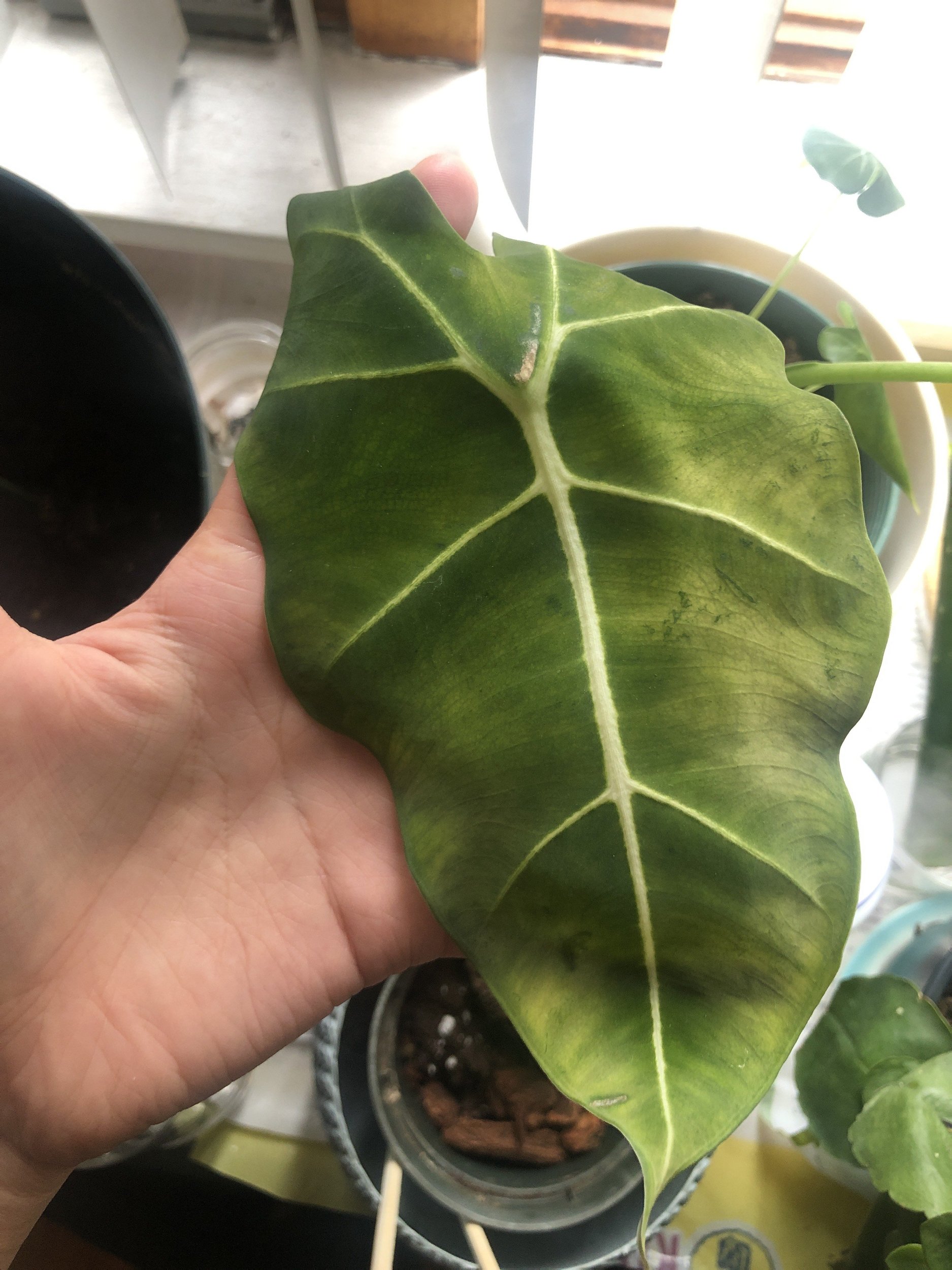Alocasia
Alocasia are tropical plants that are increasingly becoming popular as houseplants.They can grow very fast, and in the right conditions, some species are considered invasive, There are total of 97 accepted species widely cultivated around the world.They are typically grown as pot plants, but a better way is to grow the plants permanently in the controlled conditions of a greenhouse. Alocasia is a favourite addition to indoor plant collections due to its unmatched visual and sculptural appeal.
It's great for placement either alone or grouped with other planters indoors or outdoors.

Where to plant?
Alocasias need bright, but indirect light. Since direct sun will cause the leaves to burn, so avoid placing your Alocasia in a spot where it'll be exposed to direct sun for a prolonged period.
Also keep in mind that these plants is not tolerant of low light. They grow best in humid environments.
Don't place your plant near to an air conditioner or a heater.
How to care?
While watering. Always check the moisture level in the soil first to ensure it isn’t moist right beneath the surface.
They like soil a little on the drier side, but require high humidity to prosper.
we recommend frequent mistings with a misting bottle. For watering, allow the top 2-3" to dry between watering to ensure the plant isn't sitting in soil that is too wet.
During the winter, Alocasias will go through a dormancy period and will require less frequent waterings as the soil will take longer to dry. Alocasias can be susceptible to root rot and fungal infections if their soil doesn't have proper drainage and becomes waterlogged, so we always advise potting these plants in a vessel with a drainage hole.
When misting, try not to get the leaves too wet as sitting water can damage the leaves and weigh the stems down. Keep the plant away from the dry air that is emitted by heaters and air conditioners.
Rotate your plant periodically to ensure even growth on all sides and dust the leaves often so the plant can photosynthesize efficiently. When dusting the leaves, also take the opportunity to inspect the undersides and keep an eye out for pests.
Issues:
Drooping:
- Droopy leaves are often caused by over or under watering, pests, insufficient light, or insufficient nutrients in the soil. Check whether your watering schedule needs adjusting. You may need to move it closer to the light source.

Spots:
- They can be sensitive to salts, minerals, and chlorine in tap water, which causes spotting. Let the water sit for 24 hours in a bucket or your watering can before giving it to the plant. This will allow for some of the unwanted materials to evaporate. Alternately, use distilled water.
| Botanical Name | Alocasia |
| Common Name | Alocasia, elephant ears, African mask |
| Plant Type | Tropical plant grown as a houseplant in non-tropical climates |
| Mature Size | 2–15 feet in height; 2–8 feet in spread (depends on species and variety) |
| Sun Exposure | Bright indirect light indoors; part shade outdoors |
| Soil Type | Loose, well-draining potting mix or crumbly loam |
| Soil pH | 5.5 to 6.5 (slightly acidic) |
| Bloom Time | Spring and summer |
| Flower Color | Light butter-yellow (flowers are not showy) |
| Hardiness Zones | 10–11 (often grown as a houseplant) |
| Native Areas | Tropical and subtropical regions of Asia, eastern Australia |
| Toxicity | Many species are highly toxic to humans and pets |